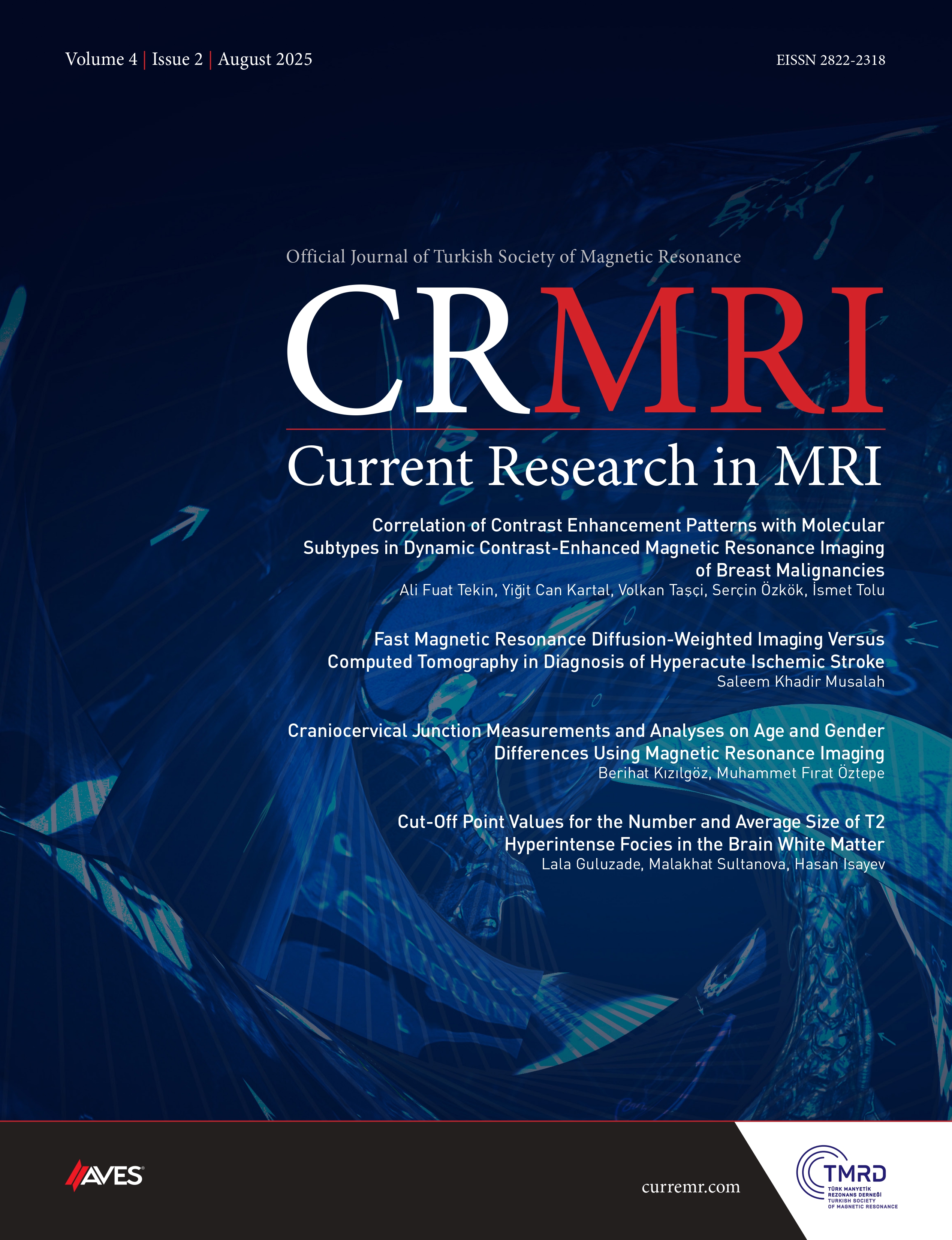Background: Liver hydatid cyst ruptures entering the biliary tree can lead to life-threatening conditions. This study investigates the frequency of biliary rupture and the most common magnetic resonance imaging findings.
Methods: Patients with hydatid cyst within the last 5 years were screened. Demographic data, the hepatic segment location, number of lesions, lesion size, and type of cyst were recorded, and biliary communication was evaluated. In patients with biliary rupture, the presence of dilation bile ducts, the presence of struc- tures consistent with cyst contents in the bile ducts, the presence of fistulous connections, and the frequency rates of these findings were evaluated.
Results: Fifty-five cyst hydatid lesions from 50 patients (30 male and 20 female) were included. 4 (8%) patients had biliary rupture. Among them 4 (100%) patients had dilation in the intrahepatic and common bile ducts, 3 (75%) had deformation of cyst, 2 (50%) had structures consistent with cyst contents in the even ducts, and 1 (25%) had a fistulous connection shown by magnetic resonance imaging. Age and gender did not differ between patients with and without biliary rupture (P > .05). Patients with biliary rupture had larger cysts than those without (P < .05), and type 3 hydatid cysts were the most common.
Conclusion: In conclusion, the frequency of intrabiliary rupture in our study was found to be 8%, and significant imaging findings can be obtained with magnetic resonance imaging in the evaluation of intrabiliary rupture. Bile duct dilation, cyst deformation, cyst contents in the bile ducts, and fistulous connection are the most common magnetic resonance imaging findings in patients with intrabiliary rupture.
Cite this article as: Ece B, Koyun M. Evaluation of imaging findings in hepatic hydatid cyst patients with intrabiliary rupture: A retrospective magnetic resonance imaging study. Current Research in MRI, 2023;2(2):27-31.



.png)
